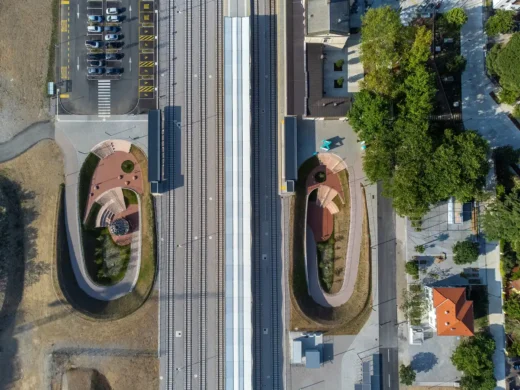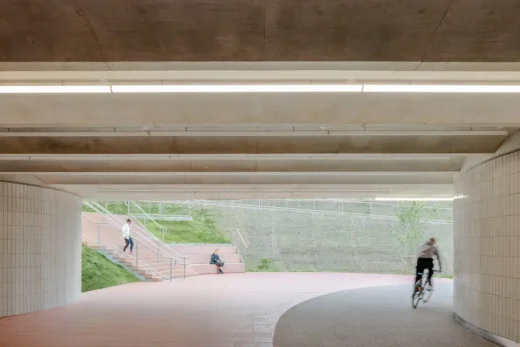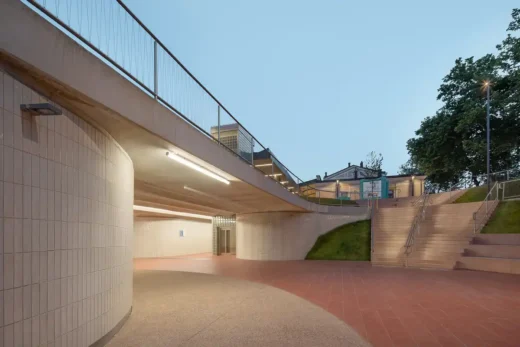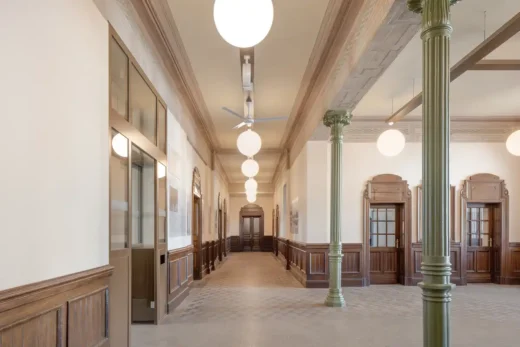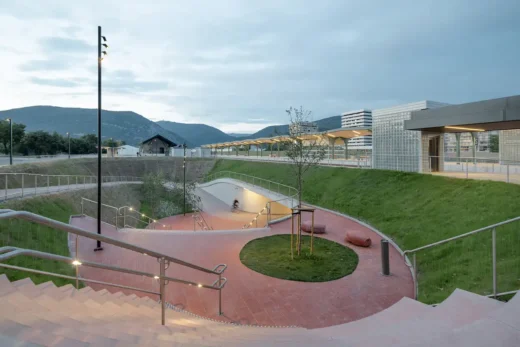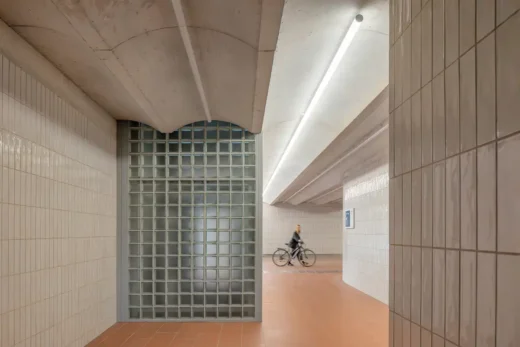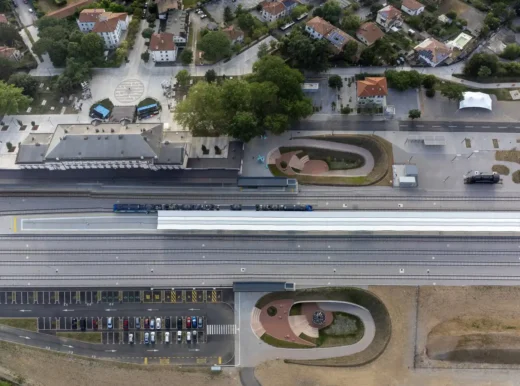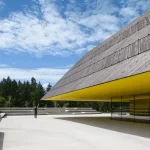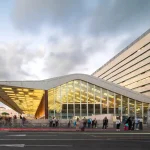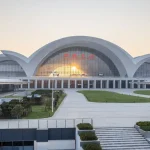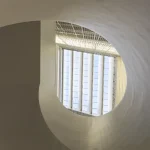Nova Gorica Railway Station building refurbishment, Underpass Vrtača Slovenia, Sadar+Vuga Transalpina design
Nova Gorica Railway Station and Underpass Vrtača
30 June 2025
Design: Sadar+Vuga
Railway Infrastructure as new public space: Underpass Vrtača connects Nova Gorica and Gorizia
Nova Gorica Railway Station building renewal + Underpass Vrtača design
In 2025, the two bordering cities, Nova Gorica (Slovenia) and Gorizia (Italy) jointly hold the title of European Capital of Culture. This symbolic and operational alliance is redefining the connection between the cities where the encounter of two languages, cultures, and traditions intertwines and shapes new, shared ways of life.
The project – the renovation of part of the Transalpina railway station building and the redevelopment of the Nova Gorica railway area, including reconfiguration of the tracks, construction of a new island platform, refurbishment of the side platform, and creation of the Vrtača underpass – physically embodies the connection between two once-divided cities. The historic Transalpina Station has long symbolized separation, with the borderline just meters away at Piazza Transalpina, is now a symbollic and functional point of connection.
The main challenge was to reimagine what the railway station area could represent in the future. The first step was the reconfiguration of the railway infrastructure which included reduction of train tracks from 14 to 6 and addition of new island platform. This restructuring made space for a new pedestrian link beneath the tracks – the Vrtača Underpass – allowing visitors to have a safe, direct passage between the two cities for the first time.
The off-level access to the passenger platforms is an important new urban gesture that spatially and programmatically integrates the infrastructure of the underpass with the design of the public space. The underpass is thus not designed only as a utilitarian connection, but also as a space for walking, meeting, sitting and gathering.
The path beneath the tracks is 36.6 meters long and up to 8 meters wide (3.5 m for cyclists and 4.5 m for pedestrians). It is naturally lit from both entry points and through a central skylight located above the elevator that connects to the island platform. At both ends, the underpass opens onto elliptical sunken plazas — or so-called “ditches.” From the underpass, visitors ascend to ground level via wide staircases or spiral ramps that wrap around the perimeter of the ditches and accommodate cyclist.
The materiality of the underpass was carefully selected to create a bright and welcoming public space. Natural daylight, glossy white reflective wall tiles, and colored paving together establish a welcoming and safe atmosphere, while clearly separating pedestrian and cycling zones. The brick-colored ceramic flooring continues into the plazas, where colorful stairs and ramps rise toward the station, forming a contrast with the green, planted slopes. This contrast visually softens the scale of the ditches and introduces a natural element into the project.
An important part of the project was also the renovation and restoration of a part of the historic 1906 Transalpina station. The renovation focused on the functional redesign of the interior, with emphasis on the entrance lobby, ticket offices and new waiting area. Additionally restoration of the original paving, wooden wall panelling, columns, side canopy and the discovered frescoes was carried out in close cooperation and coordination with the Institute for the Protection of Cultural Heritage (ZVKDS).
Just months after opening, the Vrtača Underpass has already established itself as a vital public link. The area around the station has become an active hub of everyday urban life – full of cyclists, commuters and visitors, not only crossing the tracks, but moving from one city to another – effortlessly, openly, and without borders.
As part of the European Capital of Culture GO! 2025, the underpass is more than an architectural intervention – it is a cultural connector. It hosts a temporary photography exhibition, features the interactive Ingeborg Dome installation in its eastern plaza, and links directly to nearby events and concerts held at the Piazza Transalpina.
Nova Gorica Railway Station and Underpass Vrtača – Building Information
Project Name
Nova Gorica Railway Station and Underpass Vrtača
Project Authors
Sadar+Vuga
Investor
Ministry for Infrastructure, Slovenian Infrastructure Agency
Photography
Ana Skobe
Location
Nova Gorica, Slovenia
Year of Completion
2025
Net Area
Underpass: 641 m²
Eastern Vrtača: 1706 m²
Western Vrtača: 1339 m²
Side Platform: 1220 m²
Island platform: 2216 m²
Architecture
Sadar+Vuga d.o.o. (Jurij Sadar, Boštjan Vuga, Miha Čebulj, Petko Grabljić, Belén Villán Fernandez, Urška Linda, Bauermann, Nicholas Hartman)
Landscape Architecture
Studio AKKA (Ana Kučan Krajinska Arhitektura d.o.o.)
Structural Engineering
Elea iC d.o.o.
Railway Infrastructure
SŽ – projektivno podjetje Ljubljana d.d.
Nova Gorica Railway Station building renewal + Underpass Vrtača images / information from
Location: Nova Gorica, Slovenia, southeast Europe.
Nova Gorica Buildings
Nova Gorica Architecture Designs
Stamboldžioski Dental Studio Nova Gorica building
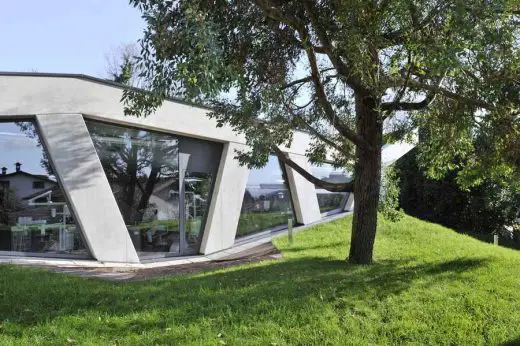
photo : Miran Kambič
Nova Gorica Apartments
Design: Ofis Arhitekti
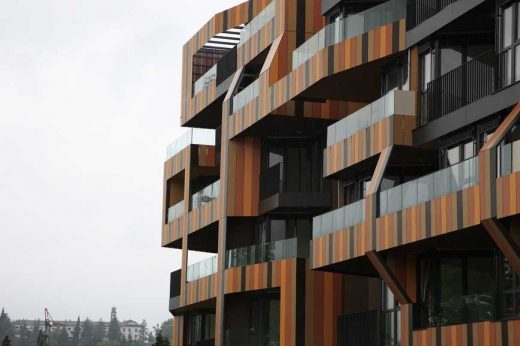
photo : Tomaž Gregoric
Nova Gorica House: Apartments Zvezda
Architecture in Slovenia
Slovenia Architecture Designs – chronological list
Slovenia Architectural Designs
DCB Montana Ljubljana Building, Moste industrial zone
Design: BAX
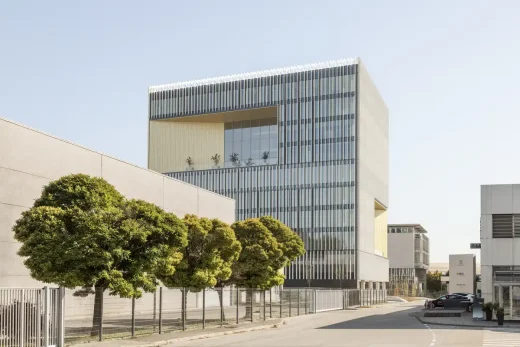
photo : Ana Skobe
Skatepark Stožice Ljubljana Building, Vojkova cesta 100, Ljubljana
Design: SADAR+VUGA
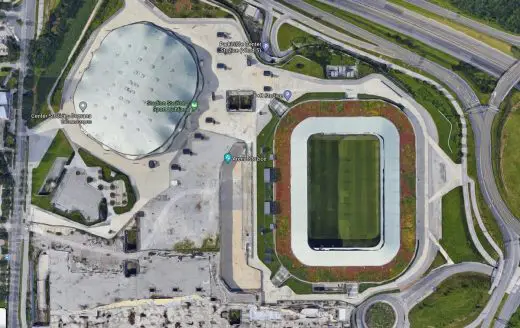
photo : FOTO archive Sadar+Vuga
Koper Central Park
Design: Enota
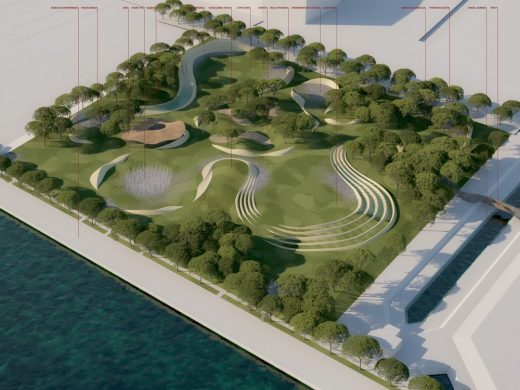
image courtesy of architects
Apartment House Gradaška, Ljubljana
Design: Sadar Vuga Arhitekti
Comments / photos for the Nova Gorica Railway Station building renewal + Underpass Vrtača design by Sadar Vuga Arhitekti in Slovenia page welcome.


